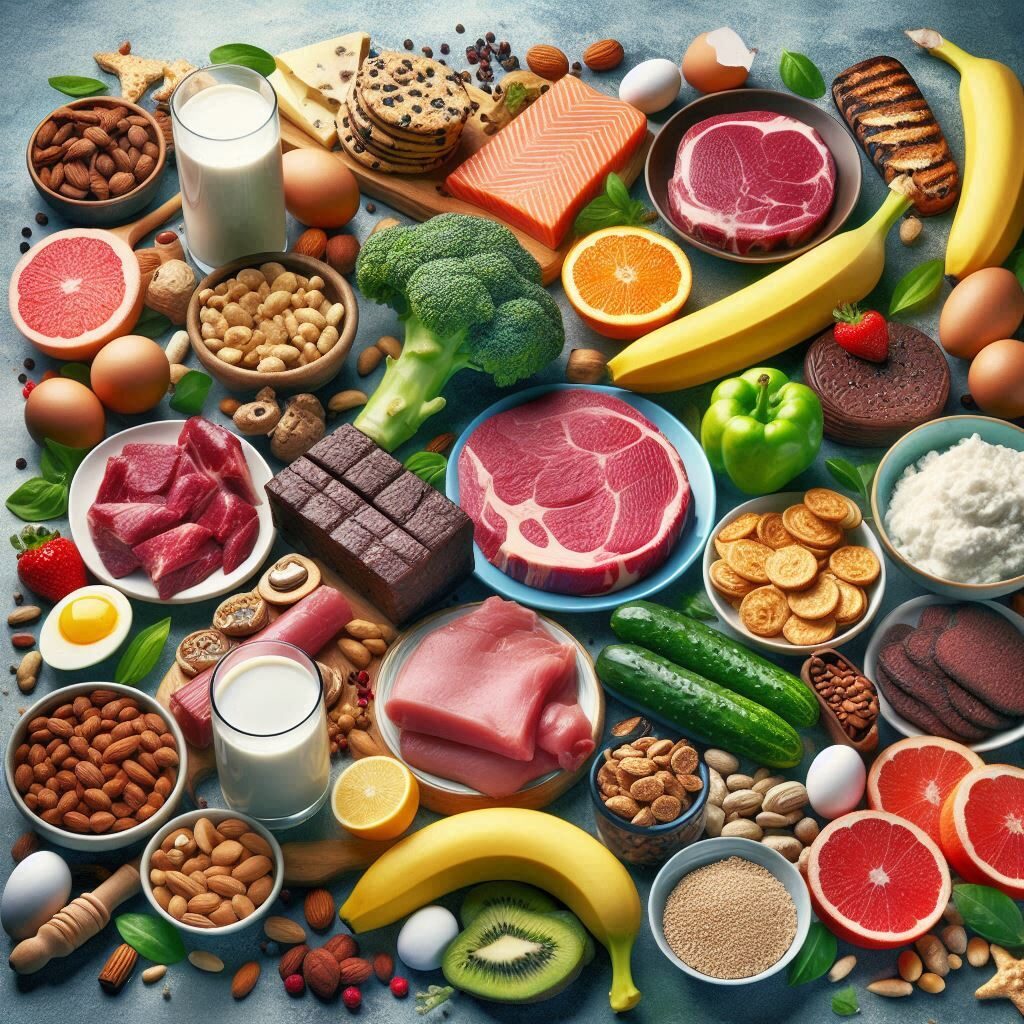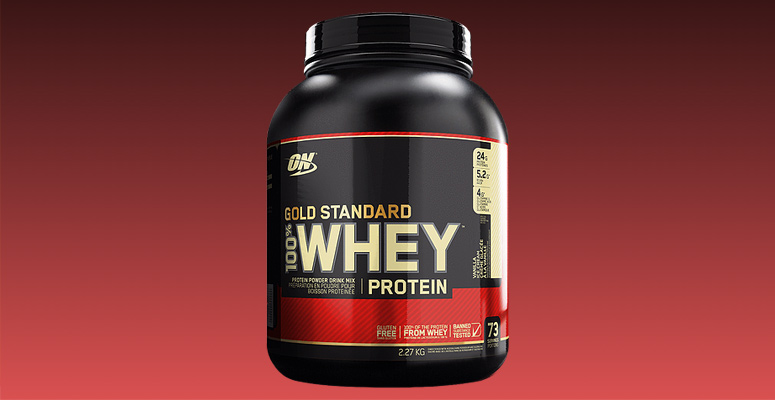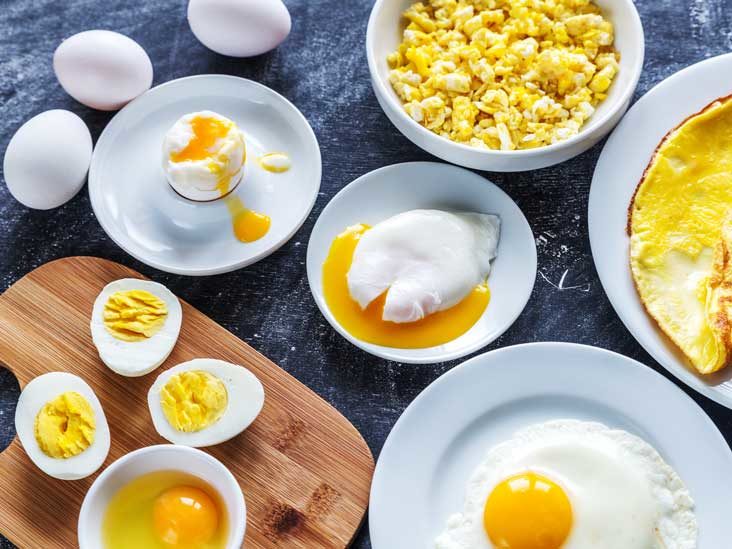Tofu
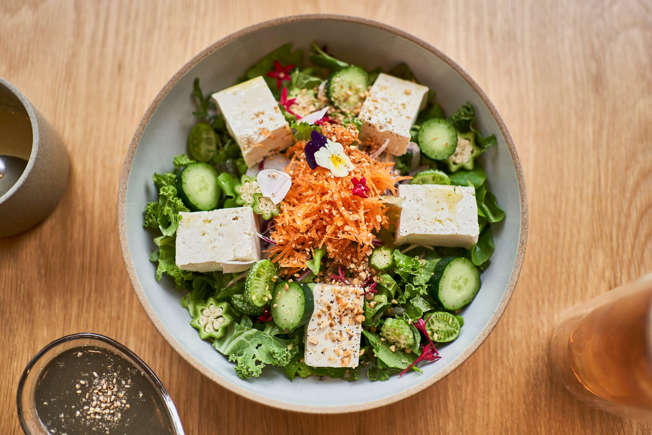
Made from soybeans, tofu is a complete plant-based protein that delivers 21.8 grams of protein in a half-cup serving. “Extra firm and firm tofu are great for stir fries and when you want the tofu to maintain its shape,” says Amidor. “Soft tofu can be battered and sauteed or pureed while silken tofu can be used in smoothies, blended and in sauces.”
¿Tienes algunas sobras que usarás en futuras recetas de tofu? El tofu se congela bien hasta por cinco meses. Simplemente descongele en el refrigerador y escurra el exceso de líquido cuando esté listo para usar
Frijoles negros
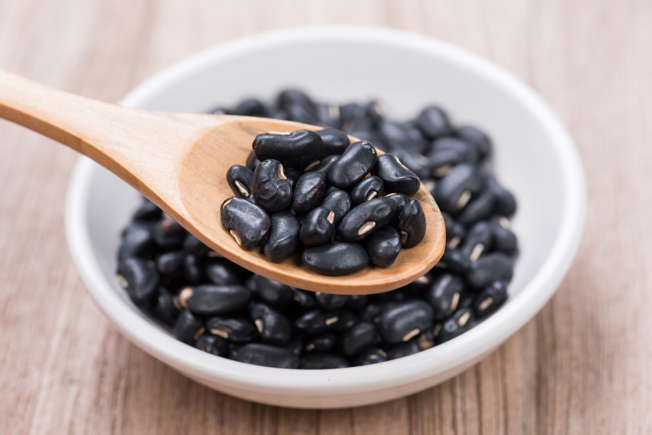
Los frijoles negros enlatados sin sodio agregado son una excelente manera de aumentar su proteína y, al mismo tiempo, aumentar el hierro y la fibra: duran de dos a cinco años sin abrir. Una porción de media taza produce 6.99 gramos de proteína, y es una deliciosa adición al chile, mezclado con arroz o mezclado sobre una ensalada. También puedes consultar estas recetas que comienzan con una lata de frijoles negros si necesitas gastar algunas latas. ¿No puede encontrar opciones bajas en sodio? Amidor dice que enjuagar los granos puede reducir el sodio hasta en un 40%.
Mantequilla de maní
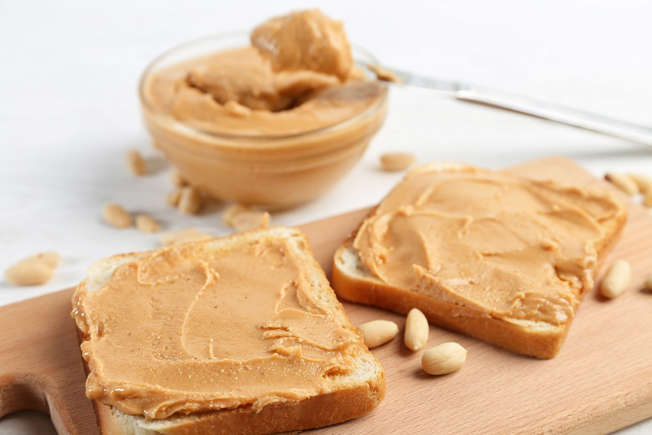
¿A quién no le gusta un sándwich de mantequilla de maní y mermelada a la antigua? Cuando se combina con pan integral, esta es una comida completa que proporciona 8 gramos de proteína, y no importa si elige crujiente o suave. También obtendrá aproximadamente el 20% de su cantidad diaria recomendada de niacina, el 8% de su fibra dietética diaria y el 10% de su vitamina E diaria en solo dos cucharadas.
Un frasco abierto de mantequilla de maní se puede almacenar en la despensa hasta por tres meses, dice Amidor, y luego debe almacenarse en el refrigerador durante 3-4 meses más. O siga estas formas para usar un frasco de mantequilla de maní más rápido.
Salmón

Fresh, frozen or canned, salmon is a protein powerhouse, with almost 19 grams per 3 ounces. “Whether you choose farmed or wild, it is up to you,” “If affordability is a factor, choose the cheaper one as you will still get all the nutrition, including heart-healthy omega-3 fats, which most folks don’t get enough of.” The Food and Drug Administration’s (FDA) Dietary Guidelines for Americans recommend at least 8 ounces of seafood per week based on a 2,000-calorie diet, and salmon is one of the “best choices” when it comes to limiting mercury.
Quinua
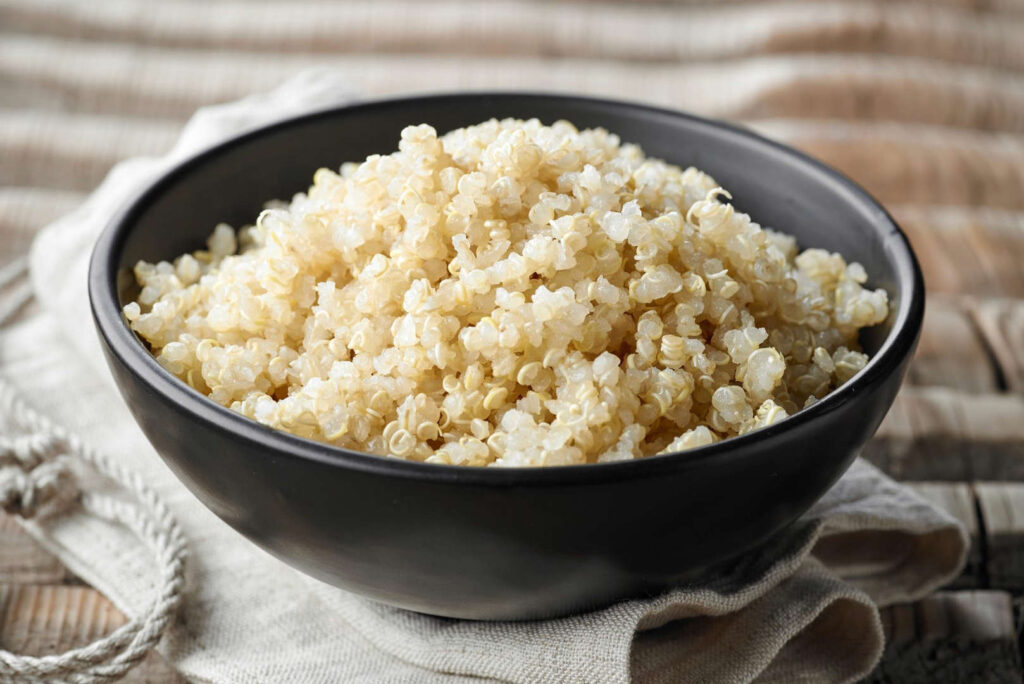
This seed is categorized as a whole grain, and aside from boasting 8.14 grams of protein in a cooked cup, it also provides manganese, phosphorus, magnesium, folate and thiamin. “Look for pre-rinsed quinoa, as the seed naturally has a bitter outer covering, which is washed off when rinsed,” says Amidor, noting that the white, red, black and rainbow varieties all have a similar taste and nutrition content.
Requesón
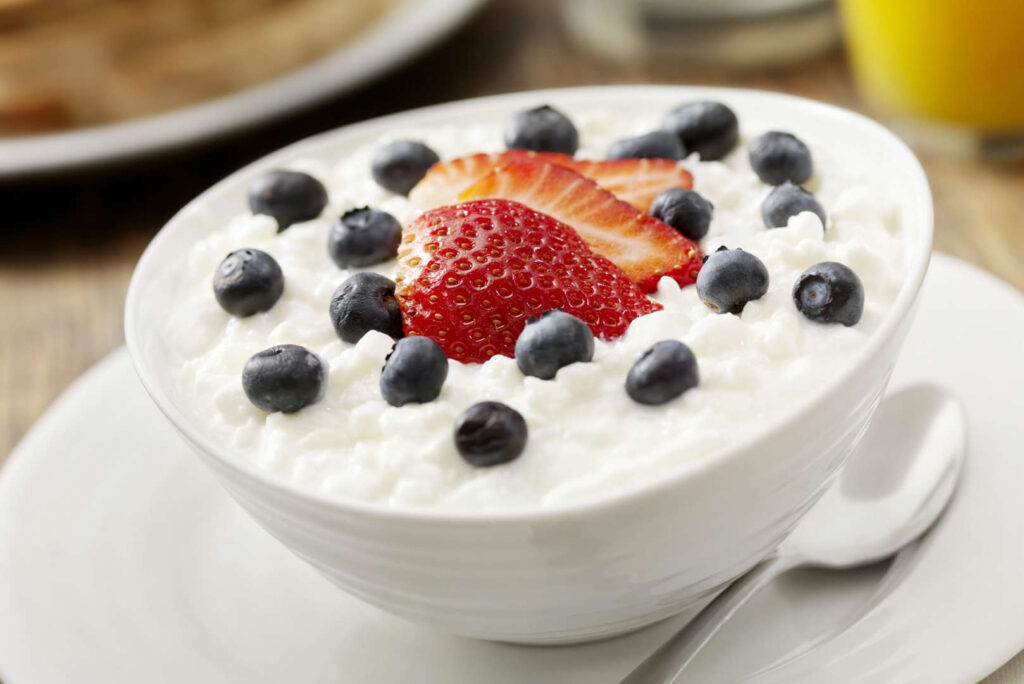
Cottage cheese packs 11 grams of protein into a one-cup serving, but the health benefits don’t stop there. “It also provides calcium, numerous B vitamins, selenium, iodine and phosphorous,” says Amidor. “Enjoy it topped with fruit and nuts as a snack or meal, and use blended cottage cheese in smoothies and dips.” Cottage cheese pancakes, anyone?
Yogur griego
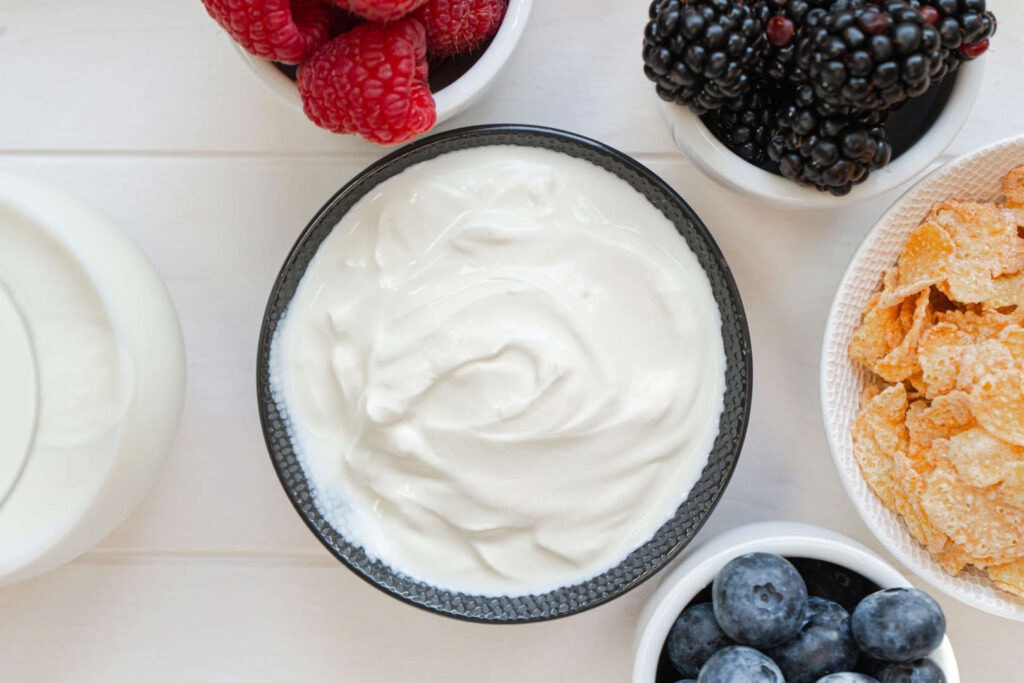
Hop off the regular yogurt train because the health benefits of Greek yogurt are unmatched—7 ounces of lowfat plain Greek yogurt contains 19.9 grams of protein. For those who consider dairy your foe, you may be able to tolerate Greek yogurt. “Due to the live, active cultures, some folks with lactose intolerance find Greek yogurt easier to digest, plus it has a lower lactose level compared to other dairy foods like milk,”. Greek yogurt is an easy replacement for mayo in many recipes and also works as a decadent dessert or stuffed in French toast.
Pollo
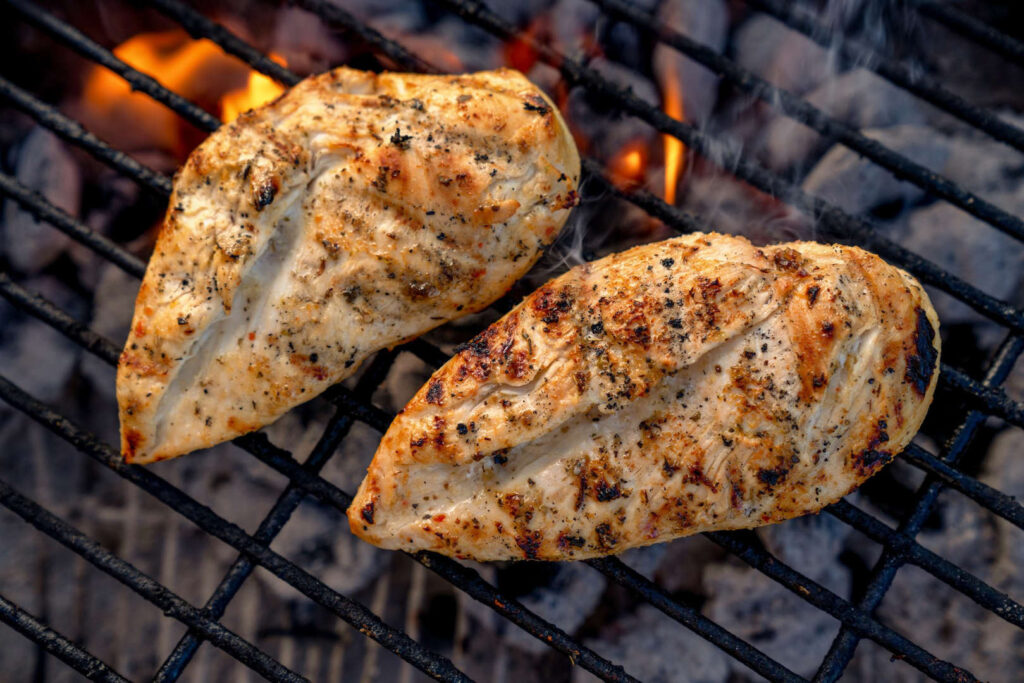
Depending on which part of the chicken you’re eating (breast or thigh), 3 ounces of chicken contains between 20 and 26 grams of protein. “While many people reach for the breast because it’s leaner and a little higher in protein than the thigh, thighs can also fit into a healthy diet and tend to be more flavorful,”. “Chicken thighs also offer more iron than breasts, which can be helpful to meet your iron needs.”
Turquía

Similarly to chicken, turkey protein varies between 22 and 26 grams of protein for 3 ounces, depending on the cut—white meat will have slightly more protein than dark meat. “I always encourage people to choose the cut they enjoy most because the difference in fat isn’t going to make a significant difference in your health,”.
Edamame

Edamame, or soybeans in the pod, is a solid source of plant-based protein with 9 grams per half-cup. It’s also a good source of fiber, calcium, iron, magnesium and folate. “Edamame is also known for having soy isoflavones, which may be particularly beneficial for peri- and postmenopausal women, as isoflavones are linked to fewer menopause symptoms, increased bone density and lower rates of breast cancer,”.
Tempeh

El tempeh, que está hecho de soja fermentada, no solo ofrece 15 gramos de proteína de origen vegetal por porción de 3 onzas, sino que también está repleto de fibra, hierro, calcio y fibra. Al igual que otros alimentos fermentados, contiene algunos probióticos, que may support gut health. Aquí hay al menos cinco formas de cocinar tempeh para ayudarlo a comenzar a incorporarlo en sus resúmenes de almuerzo y cena.
Garbanzos

Además de los 7 gramos de proteína por media taza, los garbanzos también contienen 6 gramos de fibra que llena el vientre. Están llenos de vitaminas y minerales, incluidas las vitaminas B, el hierro, el zinc y el magnesio. Si compra garbanzos enlatados, Anzlovar recomienda elegir opciones bajas en sodio o sin sal agregada. Si no puede encontrarlos, enjuagarlos reduce el contenido de sodio.
Atún

Canned tuna is an easy and inexpensive way to add protein to your diet. Just 3 ounces (a little more than half a can) contains 21 grams of protein. “It’s also a good source of omega-3 fatty acids, which offer tons of health benefits from supporting your heart to your brain,” says Anzlovar. “Canned tuna in olive oil can offer additional healthy fats and tends to be more flavorful and a little less dry than tuna packed in water.” One word of caution: Tuna is a higher-mercury fish listed under “good choices” by the FDA, so only eat this once a week.
Semillas de cáñamo

Estas pequeñas semillas de la planta de cáñamo pueden ser diminutas, pero ofrecen grandes beneficios. Tres cucharadas de semillas de cáñamo contienen 10 gramos de proteína, el 20% de sus necesidades diarias de hierro y varias vitaminas B (incluido el ácido fólico). Anzlovar dice que son una excelente manera de consumir omega-3 de origen vegetal, lo que puede ser útil para las personas que no comen pescado. No es de extrañar que sean una manera fácil de agregar proteínas a los batidos.
Lenteja
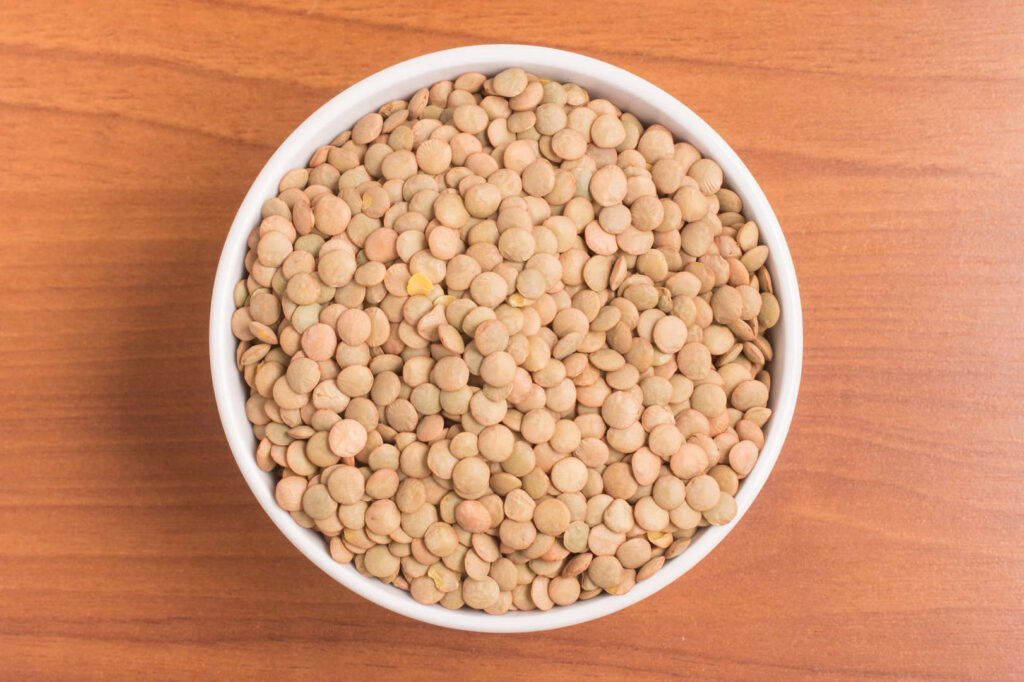
All lentils (black, green or red) pack in around 9 grams of protein and 8 grams of fiber per half cup, along with several vitamins and minerals. “They’re one of the best sources of plant-based iron, with over 30% of your daily needs,” says Anzlovar. If lentils are a little unfamiliar, start with one of these lentil recipes or whip up a batch of vegan lentil soup in just 30 minutes.
